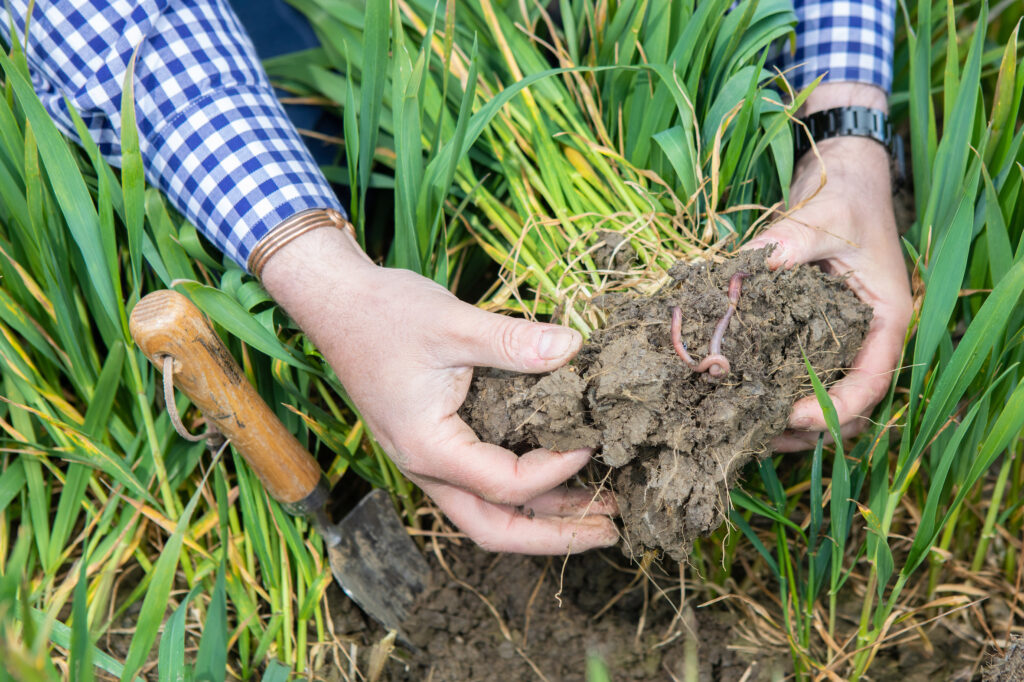If ever there was a year to highlight the need for flexibility and the adoption of as many cultural controls as possible to manage weeds and diseases in winter wheat crops, this is it!

The relatively mild and dry early winter led to comparatively forward stands in February. This was followed by an excessively wet spring, combined with cool, damp and often waterlogged soils and lack of sunshine until the second half of May. Little wonder that crop management has been particularly challenging.
Hopefully the weather took a turn for the better just in time for most crops to perform well. But it has been a real challenge all season for growers and agronomists alike to try to maximise this potential.
When put under extreme pressure, often linked to early drilling, even the most robust synthetic herbicide and fungicide programmes have struggled to cope. Grassweeds are now poking out of the top of many fields and Septoria tritici lesions can be easily found throughout the crop canopy.
Years like this really highlight the golden rules for successful direct drilling, namely maintaining good drainage and a flexible diverse rotation. In some fields you can clearly see that crops are significantly greener and taller over the drains than in the rest of the field.
It must be remembered that drainage starts from the soil surface downwards. Following the recent extreme weather, many natural drainage channels have been impeded and will need attention before the next crop.

There is a saying that ‘you get the weeds you deserve’, and again this couldn’t be truer than this season. Just like with herbicides, weeds will become resistant to our cultivation strategies if we continue to do the same thing every year.
With the open autumn last year and promising commodity prices at the time, it was tempting for some growers to try to direct drill a second winter cereal crop and, in some cases, even a third, putting in winter barley after two winter wheats. However, the dry autumn and keenness to establish crops early following the experience of recent wet autumns meant stale seedbeds were not particularly effective. Sterile brome in particular has thrived in these situations.
Testing the fungi:bacteria ratio in soils is a useful tool to at least create a welcoming environment for arable crops. Earlier succession plants such as bromes and blackgrass tend to prefer bacteria- and nitrate-dominated soils, with a fungi:bacteria ratio circa 0.3:1.
Such environments are often created by traditional industrial farming, with intensive cultivations destroying fungi and nitrate fertilisers encouraging bacterial blooms. In other words, through industrial farming, we have created the ideal environment for some of our biggest enemies.

The arable crops we are trying to grow prefer a more even fungi:bacteria ratio, for example 0.7-1:1, and more ammonium. Whilst this can’t be changed overnight, comprehensive soil testing can provide a useful indicator as to where soils are today, to help growers make informed management decisions, accelerating the journey to regenerative agriculture.
Some of the key tools to improve beneficial soil fungi levels include some of the following: reducing cultivation intensity, lessening reliance on nitrate-based fertilisers, chopping straw, adding compost, applying mycorrhizal fungi, particularly after non-mycorrhizal-associated crops such as brassicas, and using specific fungal feed such as humic and fulvic acids.
Disease control has also been an issue this season. Later-drilled crops and variety blends are noticeably cleaner, but even these are dirtier than we would like when sown early. There are lots of mixed reports with growers trying various biological compost tea-type products, with some claiming good results.
However, in most crops that have been under unprecedented Septoria pressure throughout April and early May, growers have resigned themselves to applying robust rates of the best synthetic chemistry such as fenpicoxamid or mefentrifluconazole for reliable disease control.
When using such synthetic fungicides it is very important to consider application technique and nozzle choice, ensuring as much of the herbicide hits its target and as little hits the ground as possible, thereby minimising collateral damage.
This becomes increasingly important with wider coulter spaces often found with larger direct drills. As a general rule, more chemical tends to penetrate through the crop canopy and hit the soil when using a coarser spray droplet, which many of us now use as standard to minimise drift.
Crop nutrition has been another area which has been difficult to get right this season. The excessively wet early spring increased the risk of leaching of several nutrients, including nitrates and sulphates. In addition, the lack of application opportunities and the wet, cold, often anaerobic soils reduced soil biological activity, which slowed recycling rates of nutrients in the soil.
As a result, many crops have been hungry at some point during the season. Regular sap testing or growth-stage-related tissue sampling once again have proved their worth, highlighting key deficiencies and enabling timely correction.
Heavy rain in the early spring can cause significant soil damage, so the number one priority before establishing next season’s crop is to go out with a spade to identify and correct any soil issues. Where cover crops are being used, deeper-rooting species such as tillage radish or berseem clover could be considered in these situations to help restructure soil.
Cover crops can also be used as a tool to identify areas where nature may need a little help. Areas where plants are struggling to cope with compaction will become apparent, and can be targeted with a low-disturbance loosener while the cover crop is in place.
This will help ‘release’ the roots and restructure the soil without the expense and damage to natural soil structure from having to cultivate the whole field.
“Years like this really highlight the golden rules for successful direct drilling”
Groundswell provides a great opportunity to explore the techniques outlined in this article, where you can hear about the theory and investigate the practical applications to improve your soil health and the resilience of your farming system.
Above all, choosing the right partner who can deliver the right advice based on sound knowledge and experience is a great first step to take. We at Agrovista are here to help you succeed.
Whether you are mildly curious or have already embarked on the journey, please do come along to our stand at Groundswell for a friendly chat and to see whether we can help you make the right choices to deliver your goals.
* Agrovista’s Regenerative Agriculture Guide isavailable at www.agrovista.co.uk/agrovista-downloads. Other Agrovista guides including Cover Crops Guide 2021, Soil Health Guide 2020 and Guide to Cultivations and Drills for Combinable Cropping are also available to help growers explore sustainable farming principles.


